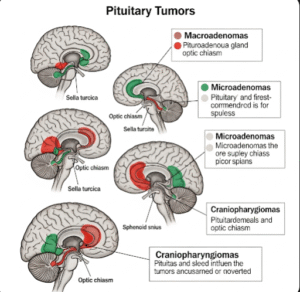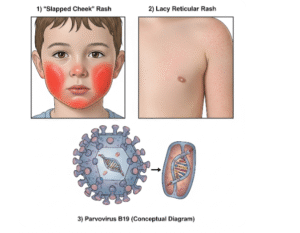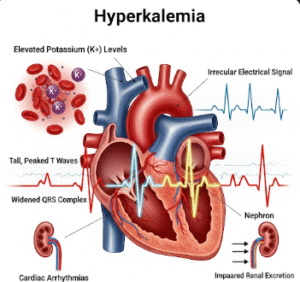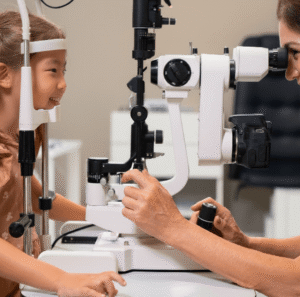Setting a Global Example in Crisis Management
When the COVID-19 pandemic swept across the world, South Korea quickly emerged as a model for rapid response, advanced technology, and effective public health strategy. From the very beginning, Korea’s approach was rooted in science, coordination, and innovation — demonstrating how preparedness and digital infrastructure can save lives.
While many nations struggled with overwhelmed hospitals and delayed testing, Korea managed to flatten the curve early through proactive measures, transparency, and community cooperation. Beyond crisis management, the pandemic also accelerated Korea’s development in digital healthcare, biotechnology, and smart public health systems, setting new global standards for future pandemics.
➤ Early Preparedness and Swift Action
Korea’s success story began with lessons learned from past outbreaks, particularly the MERS epidemic in 2015. That experience led the government to strengthen its disease response system and establish strict emergency protocols.
➤ The Korea Disease Control and Prevention Agency (KDCA) was equipped to handle large-scale testing and tracing from the start.
➤ Emergency response centers were activated within days of the first confirmed case.
➤ Transparent daily briefings helped the public stay informed and trust government guidance.
Lifestyle insight: Korea’s preparedness showed the importance of learning from the past — turning previous challenges into the foundation for success.
➤ Mass Testing: Fast, Efficient, and Accessible
One of Korea’s key strategies was its mass testing program, which became the cornerstone of its COVID-19 response.
➤ Testing facilities were quickly established nationwide, including drive-through and walk-through testing centers.
➤ Medical staff could safely collect samples in minutes, minimizing contact and risk.
➤ Results were often delivered within 24 hours, thanks to Korea’s advanced laboratory network.
Korea’s drive-through testing model, first introduced in Daegu, became a global blueprint for safe, large-scale testing and was later adopted in countries like the U.S. and Germany.
Lifestyle benefit: The system was designed to be both efficient and reassuring — allowing people to get tested safely without stepping out of their cars.
➤ Digital Contact Tracing and Technology Integration
Technology played a central role in Korea’s pandemic control. The government used digital tools to track and contain infections while maintaining privacy and accuracy.
➤ Smartphone-based apps monitored potential exposures and notified users of nearby confirmed cases.
➤ QR code entry systems were implemented in public venues, making contact tracing instant and paper-free.
➤ Data from GPS, credit card transactions, and CCTV footage helped identify infection routes rapidly.
All this was done under Korea’s Infectious Disease Control and Prevention Act, which allowed temporary use of anonymized data during health crises.
Lifestyle insight: Korea’s use of digital tools balanced efficiency with respect for privacy — showing how technology can serve public safety without overreach.
➤ Hospital Innovation and Smart Quarantine
Korean hospitals adapted quickly by integrating smart technology and telemedicine into their COVID-19 response.
➤ Hospitals separated COVID-19 and non-COVID-19 areas to prevent cross-infection.
➤ AI-assisted systems helped analyze chest X-rays and predict disease progression.
➤ Telemedicine pilot programs allowed doctors to remotely monitor quarantined patients.
➤ Robots were deployed in some hospitals to deliver food and disinfect surfaces.
Example: Samsung Medical Center and Asan Medical Center implemented smart quarantine rooms with digital monitoring systems that allowed nurses to track patient vitals remotely.
Lifestyle benefit: These innovations reduced exposure risks for healthcare workers while maintaining high standards of care.
➤ Public Cooperation and Mask Culture
Korea’s citizens played an equally crucial role in controlling the spread of COVID-19. Instead of mandatory lockdowns, the government relied on public trust, communication, and cooperation.
➤ Mask-wearing quickly became universal, supported by widespread public understanding rather than enforcement.
➤ The government created a real-time mask supply app, showing nearby stores with available stock.
➤ Hand sanitizing stations were installed in schools, workplaces, and transit systems nationwide.
Lifestyle insight: The collective discipline of Korean society — rooted in respect and responsibility — became one of the strongest defenses against the virus.
➤ Transparent Communication and Public Trust
Transparency was one of the pillars of Korea’s successful response. The government provided daily updates through televised briefings and public health apps.
➤ Detailed reports included the number of cases, recoveries, and local outbreak data.
➤ False information was actively countered through verified channels and fact-checking campaigns.
➤ The KDCA director, Dr. Jeong Eun-kyeong, became a national symbol of calm leadership and reliability.
Lifestyle insight: Honest communication built public confidence, ensuring high compliance with safety guidelines and vaccination campaigns.
➤ Vaccination and Immunization Progress
Once vaccines became available, Korea moved swiftly to establish nationwide vaccination centers using advanced logistics systems.
➤ The government used AI-powered cold chain management to ensure proper vaccine storage.
➤ Digital platforms handled appointments, records, and vaccination certificates.
➤ By late 2022, over 87% of the population had completed primary vaccination — among the highest global rates.
Lifestyle benefit: The efficient rollout reflected Korea’s organizational strength and the public’s strong commitment to community health.
➤ Advancements in Health Technology and Biotech
The pandemic accelerated Korea’s already strong biotechnology and healthcare industries.
➤ Korean firms like Seegene and SD Biosensor became global suppliers of COVID-19 test kits.
➤ Research centers developed rapid antigen and PCR tests that gained international approval.
➤ Biopharmaceutical companies, including SK Bioscience, collaborated on vaccine production and global distribution.
➤ Hospitals began expanding digital health platforms, offering remote diagnosis, AI-assisted triage, and personalized data management.
Lifestyle insight: The crisis turned Korea into a biotech powerhouse, blending medical innovation with export-driven growth.
➤ Mental Health Support and Community Care
Korea also recognized the psychological impact of the pandemic and introduced nationwide mental health initiatives.
➤ Hotlines and online counseling were launched for people experiencing anxiety, isolation, or burnout.
➤ The National Center for Mental Health provided resources for families, healthcare workers, and students.
➤ Community health centers organized programs promoting exercise, meditation, and resilience.
Lifestyle tip: Korea’s emphasis on mental wellbeing showed that true healthcare includes emotional and social balance, not just physical treatment.
➤ Lessons Learned and Future Preparedness
The pandemic taught Korea valuable lessons that continue to shape future health policies.
➤ Digital infrastructure will remain the backbone of epidemic preparedness.
➤ Public-private partnerships between tech firms, hospitals, and government agencies proved essential.
➤ Telemedicine and AI health platforms are now being integrated into long-term healthcare reform.
➤ Vaccine research and production capabilities are expanding to respond faster to future outbreaks.
Lifestyle insight: Korea’s focus has shifted from emergency response to long-term resilience — building a system that can adapt to any future global health threat.
➤ Global Recognition and Leadership
South Korea’s COVID-19 strategy has been widely praised by organizations like the World Health Organization (WHO) for its effectiveness and innovation.
➤ Korea exported testing kits, quarantine technologies, and digital contact tracing systems to dozens of countries.
➤ The government shared open data to support global research on pandemic response.
➤ Korean experts have become global advisors in pandemic preparedness and digital health strategy.
Lifestyle tip: Korea’s leadership shows how innovation, transparency, and compassion can coexist — setting a global benchmark for 21st-century healthcare.
Final Thoughts: Innovation Born from Adversity
Korea’s COVID-19 response was more than a public health effort — it was a demonstration of national unity, technological excellence, and resilience.
Through quick testing, digital integration, and strong community cooperation, the country turned a global crisis into an opportunity for growth and learning. Today, Korea stands at the forefront of healthcare innovation, exporting not only medical products but also knowledge, systems, and trust.
In the end, Korea’s response to COVID-19 proved that true innovation comes from preparation, empathy, and the unwavering belief that collective action can save lives.













